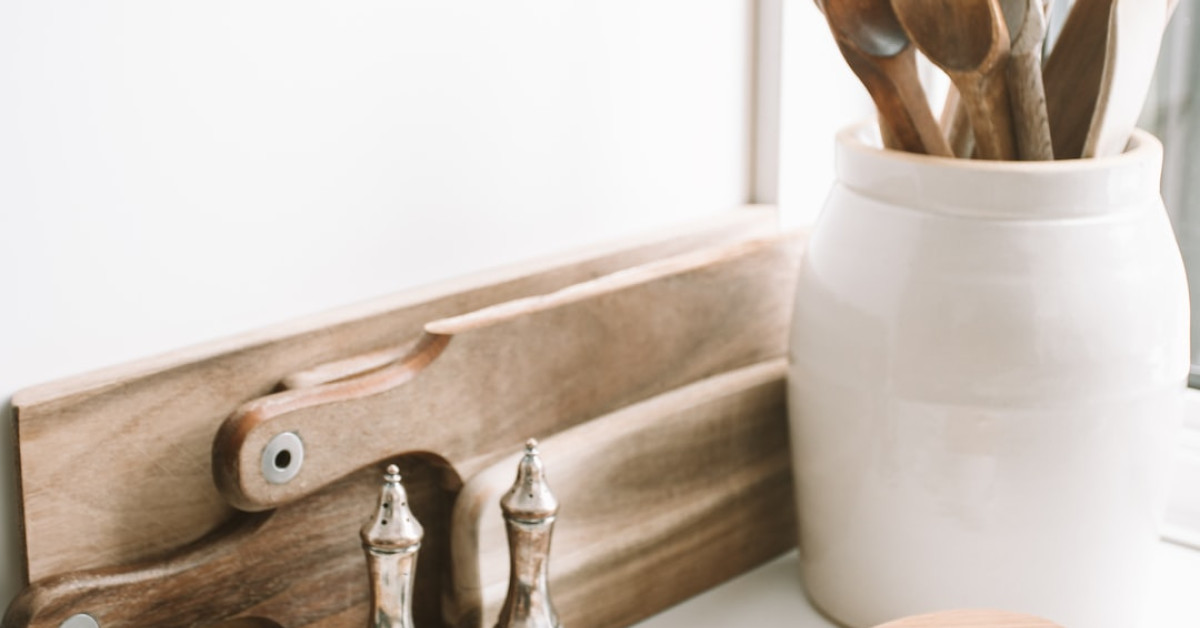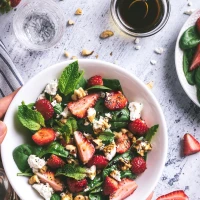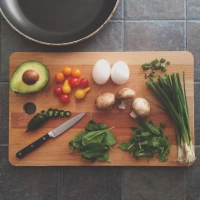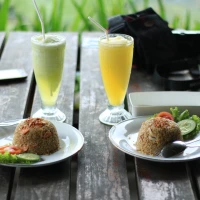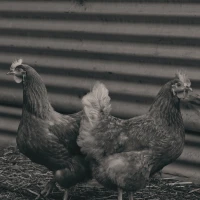Embarking on a culinary adventure within the confines of your kitchen can be an exhilarating experience. Whether you’re a novice cook hoping to enhance your skill set or a seasoned chef striving to refine your craft, mastering essential cooking techniques is key to your success. This comprehensive guide introduces over 55 indispensable methods that are sure to transform your domestic culinary endeavors into masterpieces.
Understanding these fundamentals not only increases your confidence but also elevates the flavors and textures of your dishes, thereby captivating the palates of your audience. Through persistent practice and a keen appetite for learning, these cooking techniques will equip you with the prowess of a culinary maestro, enabling you to navigate your kitchen with expertise and innovation.
Knife Skills: The Foundation of Culinary Arts
Chopping, Dicing, and Mincing
Knife skills are the cornerstone of all cooking techniques. Starting with the basics, mastering how to chop, dice, and mince ingredients can significantly speed up your prep work and ensure even cooking.
Knife Handling
- Hold the knife correctly: pinch the blade between your thumb and forefinger.
- Guide with your other hand, curling your fingers inward to avoid cuts.
Cutting Techniques
- Chopping: a rough cut, suitable for vegetables in soups or stocks.
- Dicing: a finer, uniform cut, ideal for sautéed dishes or salads.
- Mincing: very fine cutting, perfect for herbs and garlic.
Julienning and Chiffonade
These refined knife techniques are used for preparing vegetables and herbs aesthetically for garnishes and adding a delicate touch to dishes.
Julienning
- Cutting into thin, uniform matchstick-like strips, perfect for stir-fries and salads.
Chiffonade
- Stacking leafy herbs or greens, rolling them tightly, and slicing across to create thin ribbons.
Mastering Heat: Cooking Proteins to Perfection
Sautéing and Searing
Utilize high heat to achieve a flavorful crust while keeping the inside of your proteins tender and juicy.
Essentials for Sautéing
- Use a pan that’s large enough to avoid overcrowding.
- Preheat the pan and oil to prevent sticking and achieve a golden-brown sear.
Pro Tips for Searing
- Pat proteins dry before adding them to the pan.
- Do not move the protein around too much to allow for a proper crust to form.
Roasting and Baking
The oven is your ally when it comes to unlocking flavors through the slow caramelization and even cooking of meats and vegetables.
Tips for Even Roasting
- Preheat your oven for consistent heat distribution.
- Use a roasting rack to ensure air circulation around the protein.
Perfection in Baking
- Oven temperature is crucial; always use an oven thermometer to verify accuracy.
- Timing is key; use a timer to prevent overcooking.
The Subtleties of Suace Making
The Five Mother Sauces
Knowledge of the five mother sauces - béchamel, velouté, espagnole, sauce tomate, and hollandaise - can lead to endless variations.
Building Blocks for Sauces
- Béchamel: A white sauce made from butter, flour, and milk.
- Velouté: A light stock-based sauce, thickened with a roux.
- Espagnole: A rich, brown sauce beginning with a dark roux.
- Sauce Tomate: Based on ripe tomatoes, simmered and seasoned.
- Hollandaise: An emulsion of egg yolks, butter, and lemon or vinegar.
Enhancing Flavors: Reductions & Emulsifications
Deepening flavors through reductions and unifying ingredients into a smooth consistency with emulsifications are key to exquisite sauce making.
Reduction Technique
- Simmer sauces to evaporate excess water, intensifying flavors.
Emulsification Secrets
- Whisking vigorously while slowly adding oil to a water-based liquid creates a stable emulsion—essential for vinaigrettes and hollandaise.
Textural Transformations: Mastering Eggs and Dairy
Custards and Creams
Eggs and dairy can transform into luxurious custards and creams through meticulous tempering and gentle cooking.
Creating Smooth Custards
- Heat dairy gently and add to beaten eggs slowly to avoid curdling.
- Cook in a water bath to distribute gentle, even heat.
Whipped Cream Perfection
- Chill the bowl and whisk before whipping cream.
- Whip to soft or stiff peaks depending on the desired texture.
Cheese Making Basics
Exploring the art of cheese making can open up new flavors and textures you can utilize in your culinary creations.
Fundamental Cheese Techniques
- Acidification: The process of adding vinegar or lemon juice to milk to form curds.
- Curd Processing: Techniques like cutting, heating, and pressing curds define the cheese’s texture.
Mastering Carbohydrates: Grains and Starches
Perfecting Rice and Grains
The mastery of rice and grains is foundational for a versatile chef, impacting not only taste but also the final presentation of the dish.
Rice Cooking Essentials
- Rinse rice thoroughly to remove excess starch.
- Use the ideal water-to-rice ratio (usually 2:1).
- Fluff with a fork after cooking to separate grains.
Quinoa, Couscous, and Beyond
- Toast quinoa in a dry pan before cooking to enhance its nutty flavor.
- Steam couscous for a light, fluffy texture.
Potato Perfection
Whether you’re making mashed potatoes or crispy fries, understanding the different cooking methods is essential.
Mashed Potato Secrets
- Use starchy potatoes for a smoother texture.
- Heat the milk or cream before stirring into the potatoes.
Fries and Chips
- Double fry for extra crispiness: once at a lower temperature to cook, and once at a higher temperature to crisp.
Pastry and Baking Essentials
Sifting, Measuring, and Mixing
Precision in pastry and baking is critical—the difference between a delight and a disaster can come down to a gram.
Baking Accuracy
- Always sift flour to avoid lumps.
- Measure ingredients accurately, preferably with a digital scale.
Mixing Methods
- Creaming: Beating butter and sugar together to incorporate air.
- Folding: Gently integrating ingredients without deflating the mixture, often for batters and meringues.
Understanding Leavening Agents
Leavening agents such as yeast, baking powder, and baking soda are responsible for the rise and texture of baked goods.
Working with Yeast
- Proof yeast to ensure its activity before adding to recipes.
- Control fermentation by adjusting the temperature and humidity.
Chemical Leaveners
- Know when to use baking soda (acidic ingredients present) versus baking powder (no acidic ingredients).
Essential Cooking Techniques Comparison Chart
| Technique | Application | Key Points |
|---|---|---|
| Sautéing | Meats, Vegetables | High heat, preheated pan and oil |
| Roasting | Meats, Vegetables | Even oven heat, use of a rack |
| Sauce Reduction | Sauces | Simmer to intensify flavors |
| Emulsifying | Sauces, Dressings | Vigorous whisking, gradual oil addition |
| Custards and Creams | Desserts | Gentle tempering, water bath for even heat |
| Rice Cooking | Side Dishes | Rinse grains, correct water ratio, fluff after |
| Creaming (Baking Method) | Cookies, Cakes | Beat butter and sugar for airiness |
| Yeast Fermentation | Bread, Pizza Dough | Proof yeast, control temperature for fermentation |
Utilizing these essential techniques in conjunction with the right knowledge and tools will lead you to new culinary heights. Remember that cooking is an art and a skill, and like any craft, practice makes perfect. Keep experimenting in your kitchen, always aiming for that impeccable taste and picture-perfect presentation. With time, patience, and passion, you’ll become the culinary maestro you’re destined to be, creating dishes that are not only nourishing but also works of art. Happy cooking!
